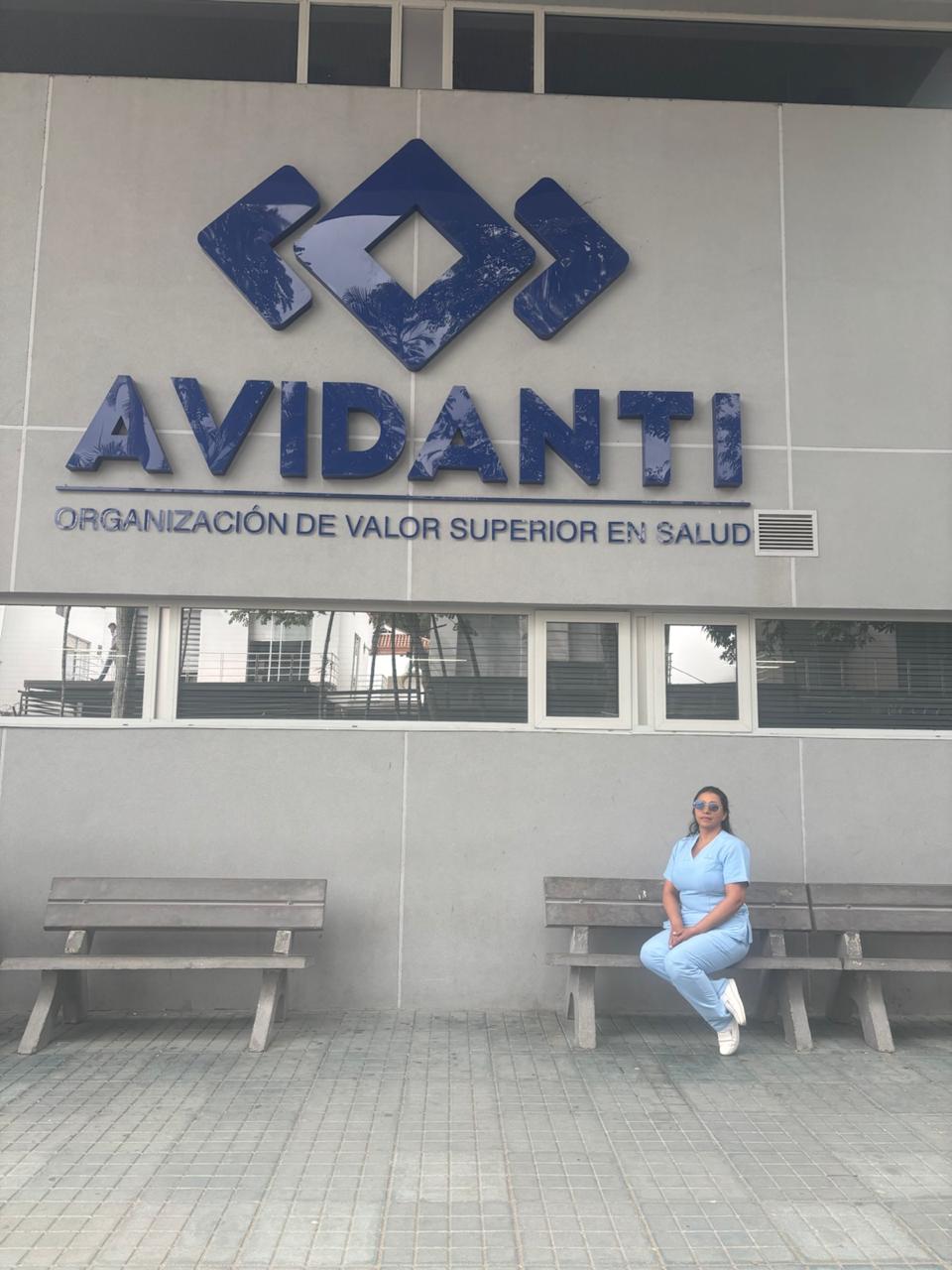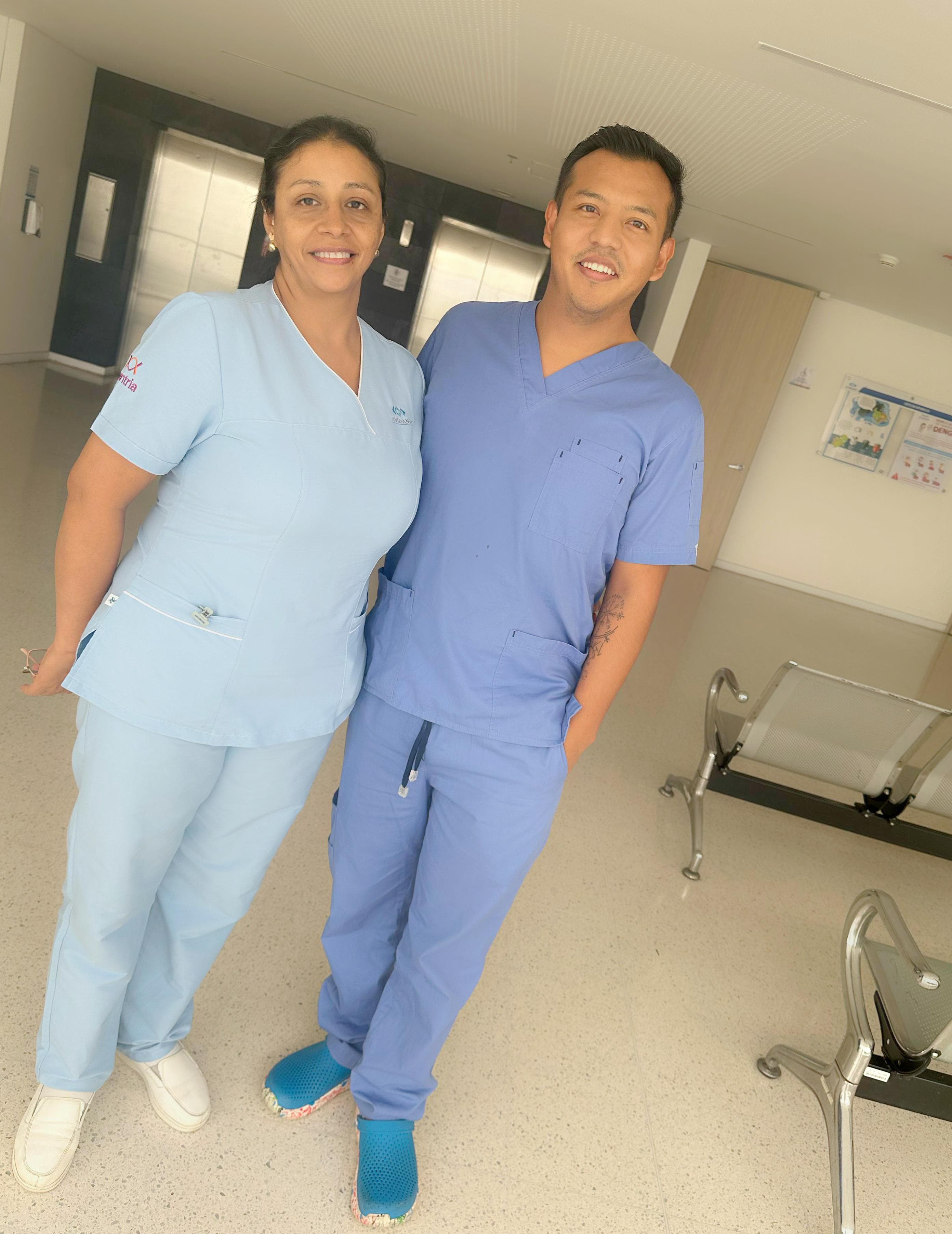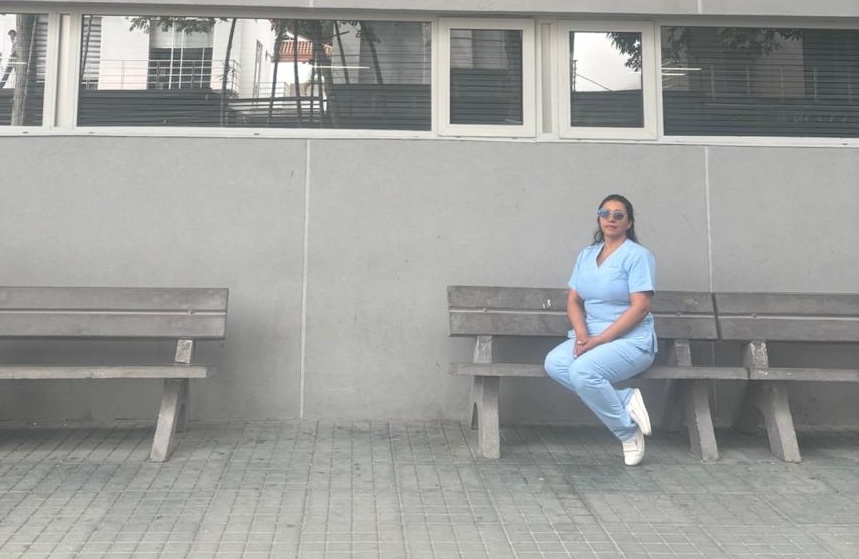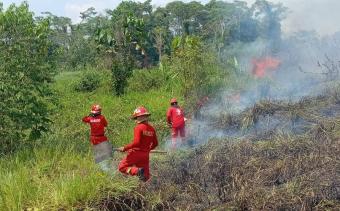
It’s 5 am on 6 January 2025, and nurse Diana Jiménez is getting ready for work. She has been awake for several hours and feels disorientated. Woken up at around 3 am by a feeling like pressure inside her head, she wasn’t able to get back to sleep.
Diana is a nursing assistant at the Avidanti Clinic in the city of Ibagué in Colombia. The clinic is a high-complexity institution, with capacity for 140 hospital beds and 45 critical care beds. It has a hemodynamics room, four operating rooms, cardiology and gastroenterology units, as well as specialized outpatient consultation, emergencies, diagnostic imaging, and specialized clinical laboratory services.
Angels consultant Andrea Torres has been working with the hospital since 2023, with the goal to improve care for patients with strokes.
Single mom Diana (45) has worked at Avidanti for 16 years. Her morning shift, in the hospitalization unit on the fifth floor, starts at 7 am. When her mother arrives at her house at 6 am to keep an eye on Diana’s 12-year-old son who is on vacation from school, she notices the apartment is unusually messy and Diana doesn’t seem herself. However, she waves her off, unaware that her daughter may be having a stroke.
Riding her motorcycle in the direction of the hospital 15 km away, Diana feels “disorientated and disconnected”. Later she will say that she doesn’t know how she made it to the clinic as she felt scarcely able to recognize the streets. Once arrived, she parks her motorcycle and takes the lift to the fifth floor to take over from the nurse on night shift, Gustavo Valenzuela.
All the personnel at the Avidanti Clinic have been trained to recognize stroke, regardless of their role and department, and each service has a protocol for immediately activating care in suspected stroke cases. This is what happens now when Gustavo realizes Diana’s speech isn’t making any sense. After instructing another colleague to stay with her, he goes to find the on-call doctor, general practitioner Dr Milton Fannor Innagan Benavides. Dr Innagan Benavides examines Diana using the Cincinatti scale, then immediately takes her to the emergency room and activates the stroke code.

A CT scan confirms Diana is having an ischaemic stroke. Her NIHSS score is seven, indicating a moderate stroke. Thrombolysis commences at 9 am. Then Diana is transferred to the intensive care unit where she will undergo more tests to determine the cause of the stroke.
After two weeks of stroke unit care, Diana is set for a complete recovery. Tests have revealed a patent foramen ovale (a small opening in the heart that remains open after birth). Thanks to the timely care of her colleagues at the clinic, she is unmarked by her stroke.

Diana’s case demonstrated the importance of having the entire clinic trained in stroke, Andrea says.
“This case also leads us to reflect how often, despite sensing something’s physically wrong, patients try to continue with their activities rather than listen to their body. If Diana had not worked at the clinic, this story would likely have had a very different ending.
“It also shows that despite all the educational campaigns conducted among the general population, awareness remains insufficient and we must continue with this work. This is demonstrated perfectly in the case of Diana’s mother who, despite observing her daughter’s ‘strange’ behaviour, allows her to go to work. It never occurs to her that Diana’s symptoms may be due to stroke.
“Seeing cases like Diana’s – of people who having had a stroke are now completely functional, living normal lives and enjoying happiness with their famlies – makes me prouder every day of my work as an Angels consultant.”
As for Diana, she is back at work, and symptom-free.
She says, “I live a normal life, I’m still working. My life continues as before. I’m taking medication but I have no mental or physical limitations. I was in the right place at the right time.”
Feeling half of her body go numb was a physically tough experience. “Even thought it was brief, it was impactful.”
She is deeply grateful to her colleagues for their vigilance and swift action, Diana says. “And I am also very attentive to patients’ symptoms, because receiving timely care and being able to continue living is a tremendous blessing.”


